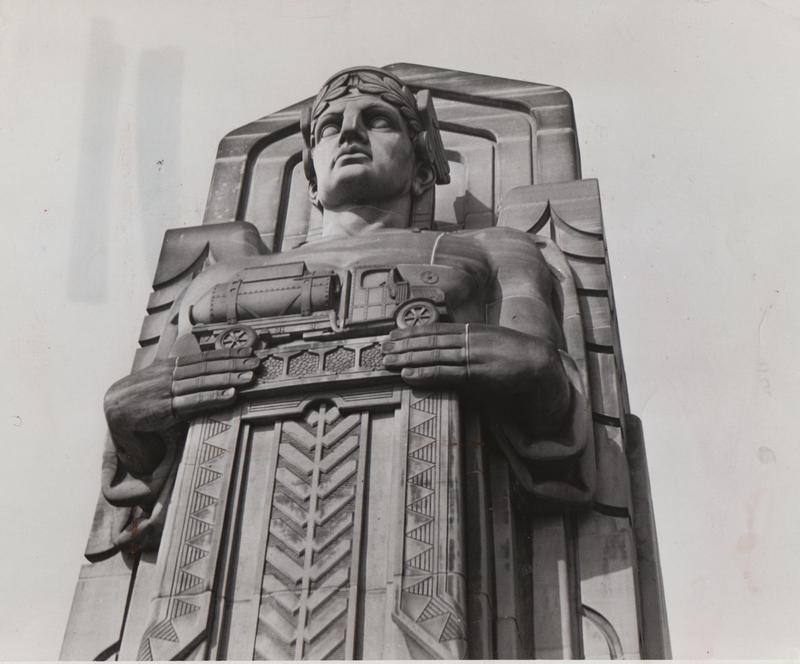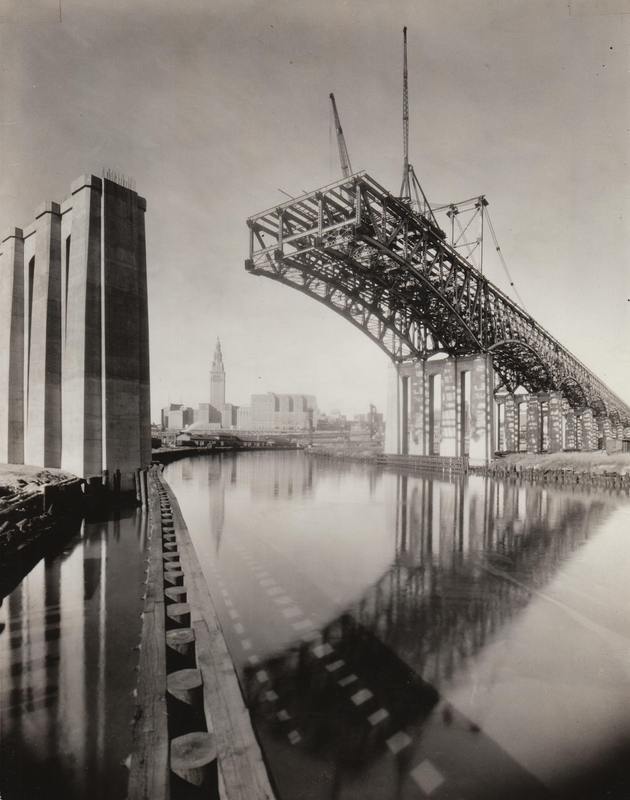
The Lorain-Carnegie Bridge opened in 1932, becoming the second fixed high-level span in Cleveland. It was built in part to relieve traffic on the Detroit-Superior Bridge (the city's other fixed high-level bridge) which opened in 1917. Construction began on the bridge in 1930, though plans for the bridge date as far back as 1902, when citizens of Cleveland presented a petition requesting construction of a high-level viaduct between Lorain and Central Avenues. In 1927, the city approved a bond issue of $8 million for the bridge's construction, changing the plan slightly to have the east approach connect with Carnegie instead of Central Avenue. Upon completion, the bridge stood 93 feet above the Cuyahoga River and had a span of 5,865 feet.
Perhaps the most memorable features of the Lorain-Carnegie Bridge are the 43-foot tall "Guardians of Transportation" which line its sides. These four huge double-sided pylons, carved out of sandstone from nearby Berea, Ohio, represent technological advances made in transit, with each Guardian holding a different kind of vehicle in its massive hands. Frank Walker designed the pylons and Henry Hering did the actual sculpting with the help of a number of local stonecutters.
In the 1970s, Cuyahoga County Engineer Albert Porter wanted to tear down the pylons in order to add lanes to the bridge. He did not get his way. So, when the bridge reopened in 1983 after nearly three years of repairs, the Guardians of Transportation were still in place. The bridge was renamed at this time, becoming the Hope Memorial Bridge, in honor of actor Bob Hope and his family, English immigrants who came to Cleveland in 1908. William Henry Hope, Bob's father, was a stonemason who worked on the construction of the Guardians in the 1930s.
Images






